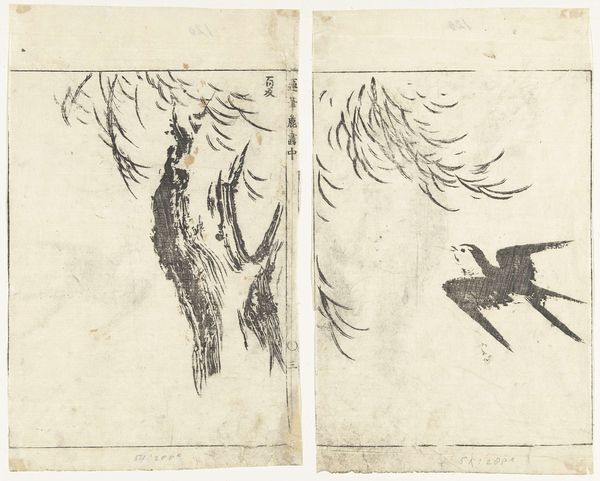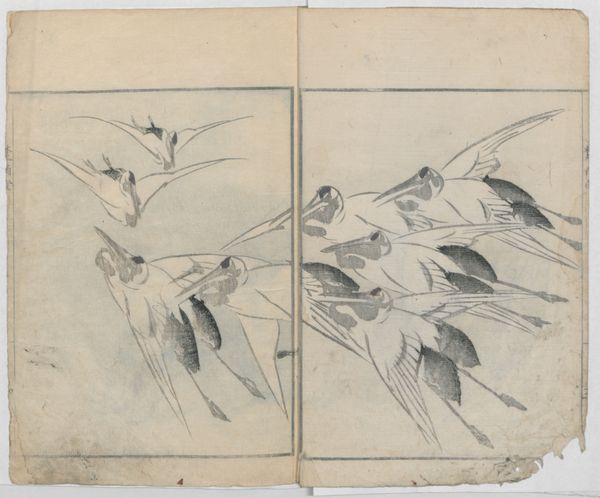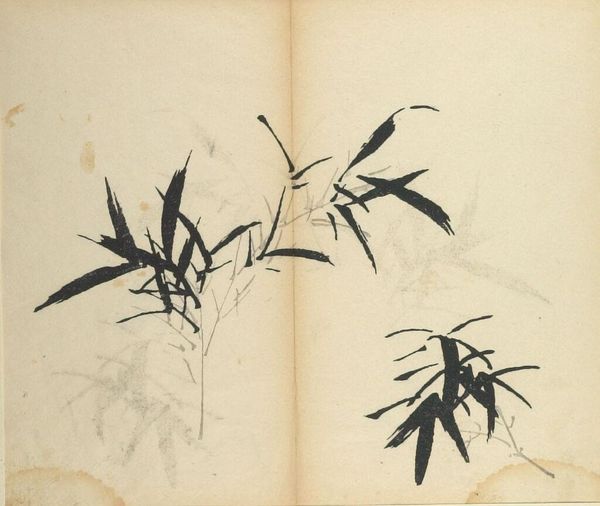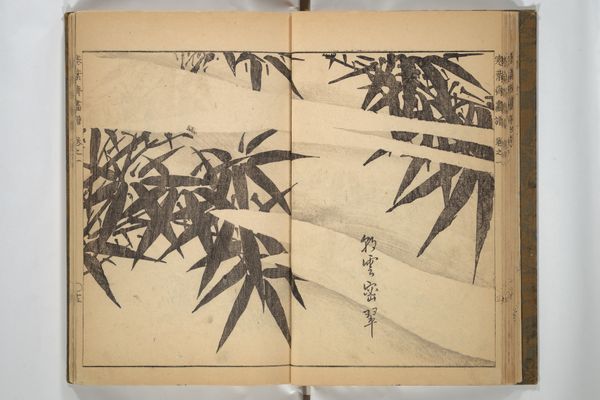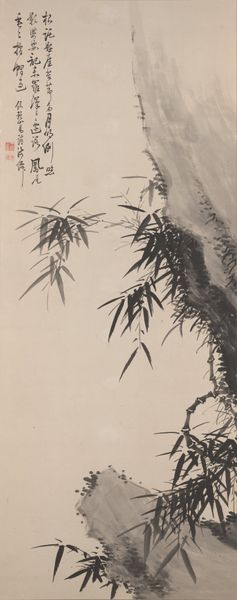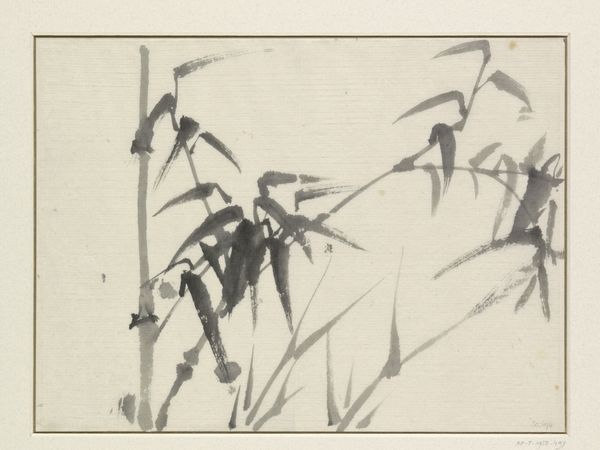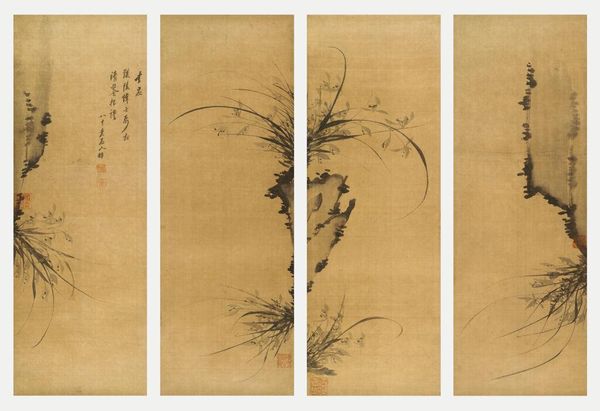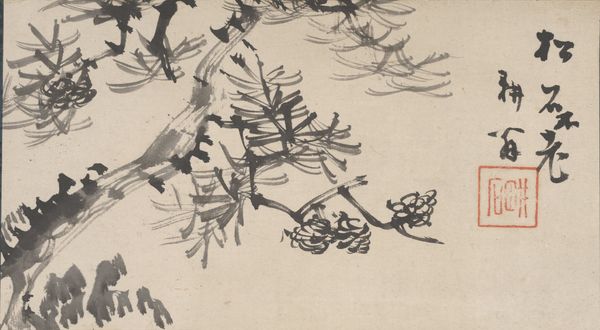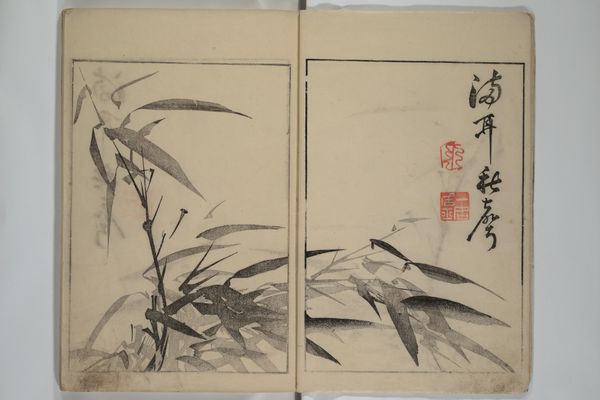
drawing, paper, ink
#
drawing
#
asian-art
#
landscape
#
ukiyo-e
#
paper
#
form
#
ink
#
line
Dimensions: height 253 mm, width 153 mm, height 255 mm, width 158 mm
Copyright: Rijks Museum: Open Domain
Tachibana Morikuni made this woodblock print titled "Bamboo" sometime in the early 18th century. It’s one of many images of plants by this artist, who helped to illustrate an important encyclopedia of practical knowledge, the Wakan Sansai Zue. Morikuni’s attention to the natural world should be understood in relation to the wider social and cultural context of Japan at this time. The Tokugawa Shogunate was in power, and Japan was a largely closed society with strict social hierarchies. Bamboo itself carries a wealth of symbolic meaning in Japanese culture. It’s not only a plant that grows quickly and straight, but also one that bends in the wind, a powerful metaphor for resilience and flexibility. As an art historian, I’m interested in how images such as this circulated at the time, and what kind of knowledge they were intended to convey. The Wakan Sansai Zue, for example, was designed to educate a broad public about the natural world. In this light, "Bamboo" can be seen as part of a larger project of social and cultural uplift.
Comments
No comments
Be the first to comment and join the conversation on the ultimate creative platform.
